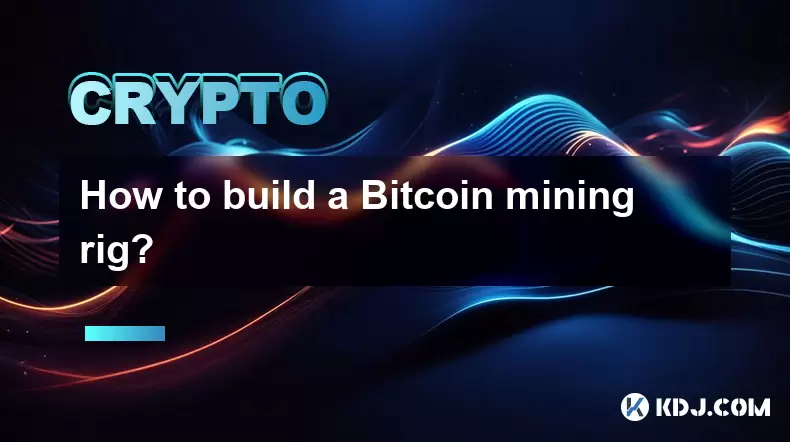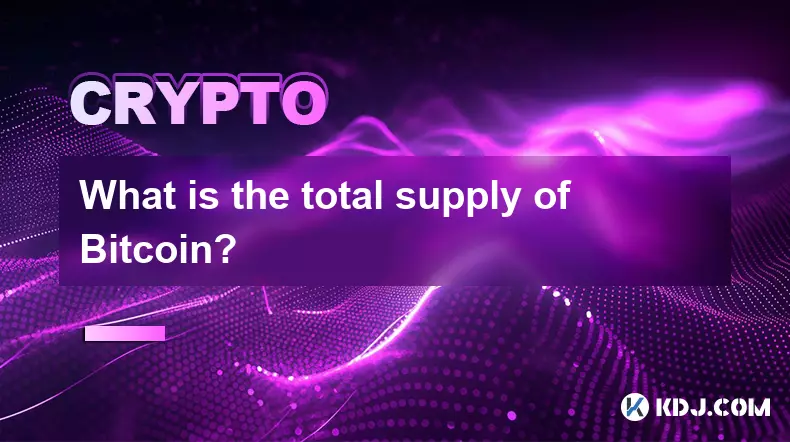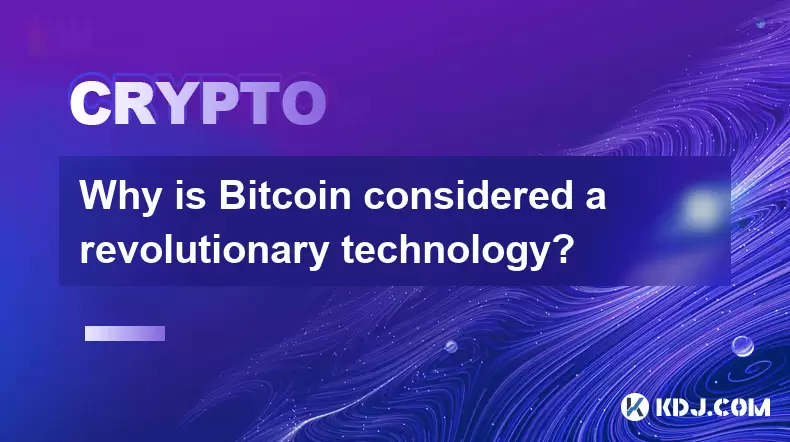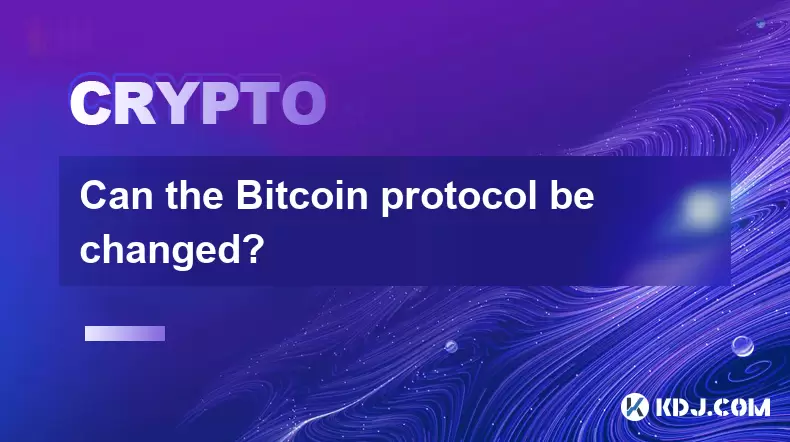-
 bitcoin
bitcoin $115692.075601 USD
5.13% -
 ethereum
ethereum $4162.931611 USD
11.68% -
 bnb
bnb $1310.063287 USD
17.56% -
 tether
tether $1.000983 USD
0.00% -
 xrp
xrp $2.534505 USD
8.16% -
 solana
solana $198.235737 USD
13.49% -
 usd-coin
usd-coin $1.000236 USD
0.02% -
 dogecoin
dogecoin $0.207352 USD
12.89% -
 tron
tron $0.323043 USD
3.62% -
 cardano
cardano $0.701559 USD
11.88% -
 hyperliquid
hyperliquid $39.924597 USD
8.30% -
 chainlink
chainlink $18.934457 USD
11.56% -
 ethena-usde
ethena-usde $1.000552 USD
0.02% -
 stellar
stellar $0.340575 USD
7.05% -
 bitcoin-cash
bitcoin-cash $545.011757 USD
8.86%
How to build a Bitcoin mining rig?
A Bitcoin mining rig is a specialized system using ASICs or GPUs to validate transactions, requiring optimized hardware and software for efficient cryptocurrency mining.
Jul 04, 2025 at 02:57 am

What is a Bitcoin Mining Rig?
A Bitcoin mining rig is a specialized computer system designed to solve complex cryptographic puzzles in order to validate transactions and add them to the blockchain. Unlike traditional computers, mining rigs are optimized for processing power and energy efficiency. The goal is to maximize hash rate while minimizing electricity consumption. Building your own rig allows you to customize components based on budget and performance needs.
Choosing the Right Hardware Components
To build an effective Bitcoin mining rig, selecting the right hardware is crucial. The most important component is the GPU (Graphics Processing Unit) or ASIC (Application-Specific Integrated Circuit). For Bitcoin specifically, ASICs like Bitmain’s Antminer series are preferred over GPUs due to their superior hashing capabilities and energy efficiency.
Other essential components include:
- Motherboard: Must support multiple GPUs or ASIC chips.
- Power Supply Unit (PSU): Should be capable of handling high wattage demands.
- Cooling System: Mining generates significant heat; efficient cooling ensures longevity.
- Storage and RAM: While not heavily used, a basic SSD and 4GB–8GB RAM suffice.
- Mining Frame or Case: Helps organize and secure hardware components.
Choosing compatible parts is vital to avoid bottlenecks and ensure stable operation.
Setting Up the Mining Software
Once the hardware is assembled, the next step is installing and configuring mining software. Popular options include CGMiner, BFGMiner, and Awesome Miner. These programs interface with your mining hardware and connect to mining pools or solo mining operations.
Key setup steps:
- Download and install the appropriate software for your hardware.
- Configure settings such as clock speed, fan control, and intensity.
- Connect to a mining pool or configure for solo mining.
- Input wallet address to receive mined coins.
Each software has its own configuration method, so it's important to follow specific guides tailored to your setup.
Connecting to a Mining Pool
Solo mining Bitcoin is generally impractical due to the immense computational difficulty. Instead, joining a mining pool increases chances of earning consistent rewards. A mining pool combines the processing power of many miners, distributing block rewards proportionally based on contributed hash power.
Steps to connect to a mining pool:
- Choose a reputable pool like Slush Pool, F2Pool, or AntPool.
- Create an account and generate worker credentials.
- Update mining software configuration files with pool URL, username, and password.
- Start mining and monitor performance through the pool dashboard.
Pools charge small fees but provide more predictable payouts compared to solo mining.
Optimizing Performance and Energy Efficiency
Efficiency plays a major role in profitability. Since Bitcoin mining consumes substantial electricity, optimizing both hash rate and power usage is essential.
Tips for optimization:
- Underclock GPUs or fine-tune ASIC settings to reduce power draw without significantly lowering performance.
- Use undervolting tools to lower voltage and improve thermal conditions.
- Monitor temperatures regularly and adjust fan curves accordingly.
- Keep mining software updated for performance improvements and bug fixes.
- Consider using renewable energy sources or mining in cooler climates to reduce cooling costs.
Proper tuning can make a noticeable difference in long-term profitability.
Frequently Asked Questions
Q1: Can I use my gaming GPU for Bitcoin mining?A: While modern GPUs can mine some cryptocurrencies, they are not efficient for Bitcoin due to the dominance of ASIC miners. ASICs offer vastly superior performance per watt for SHA-256 hashing.
Q2: How much does it cost to build a Bitcoin mining rig?A: Costs vary depending on hardware choices. A single ASIC miner like the Antminer S19 Pro may cost between $2,000–$3,500, while custom GPU rigs can range from $1,000 to over $5,000.
Q3: Is Bitcoin mining still profitable in 2024?A: Profitability depends on factors like electricity rates, mining difficulty, and Bitcoin price. Using efficient hardware and low-cost energy improves chances, but break-even periods can be long.
Q4: Do I need a dedicated internet connection for mining?A: A stable internet connection is necessary to communicate with mining pools and the Bitcoin network. However, bandwidth requirements are minimal—basic home broadband is sufficient.
Disclaimer:info@kdj.com
The information provided is not trading advice. kdj.com does not assume any responsibility for any investments made based on the information provided in this article. Cryptocurrencies are highly volatile and it is highly recommended that you invest with caution after thorough research!
If you believe that the content used on this website infringes your copyright, please contact us immediately (info@kdj.com) and we will delete it promptly.
- XRP Price Prediction: Weekend Rollercoaster or Rally?
- 2025-10-12 08:45:16
- Bittensor (TAO): Super Bullish Signals Point to Potential 2x Rally
- 2025-10-11 10:25:12
- Silver Price Correction: Navigating the Dip & Identifying Key SEO Keywords
- 2025-10-11 10:25:12
- Decoding Crypto Trends: Bittensor's Bull Run, Cardano's Dip, and LivLive's Presale Buzz in 'Uptober 2025'
- 2025-10-12 08:45:16
- MoonBull: The Crypto Meme Coin Promising 1000x Gains?
- 2025-10-11 10:30:01
- Crypto Payroll Revolution: Stablecoins, Altcoins, and the Future of Salary Payments
- 2025-10-11 10:30:01
Related knowledge

What is the total supply of Bitcoin?
Oct 10,2025 at 01:55pm
Total Supply of Bitcoin1. The total supply of Bitcoin is capped at 21 million coins. This limit is hardcoded into the Bitcoin protocol and cannot be a...

Can you buy a fraction of a Bitcoin?
Oct 10,2025 at 06:01pm
Understanding Fractional Bitcoin Ownership1. Yes, you can buy a fraction of a Bitcoin. The smallest unit of Bitcoin is called a satoshi, which represe...

Why is Bitcoin considered a revolutionary technology?
Aug 12,2025 at 08:29pm
Decentralization and the Elimination of Central AuthoritiesThe core innovation behind Bitcoin lies in its decentralized architecture, which fundamenta...

Why is Bitcoin considered a revolutionary technology?
Aug 10,2025 at 07:42pm
Decentralized Architecture and Trustless TransactionsBitcoin is considered revolutionary because it introduced a decentralized architecture that opera...

What are the key features of Bitcoin?
Aug 10,2025 at 02:50am
Decentralization and Peer-to-Peer NetworkOne of the most defining characteristics of Bitcoin is its decentralized nature. Unlike traditional financial...

Can the Bitcoin protocol be changed?
Aug 07,2025 at 01:16pm
Understanding the Bitcoin ProtocolThe Bitcoin protocol is the foundational set of rules that govern how the Bitcoin network operates. It defines every...

What is the total supply of Bitcoin?
Oct 10,2025 at 01:55pm
Total Supply of Bitcoin1. The total supply of Bitcoin is capped at 21 million coins. This limit is hardcoded into the Bitcoin protocol and cannot be a...

Can you buy a fraction of a Bitcoin?
Oct 10,2025 at 06:01pm
Understanding Fractional Bitcoin Ownership1. Yes, you can buy a fraction of a Bitcoin. The smallest unit of Bitcoin is called a satoshi, which represe...

Why is Bitcoin considered a revolutionary technology?
Aug 12,2025 at 08:29pm
Decentralization and the Elimination of Central AuthoritiesThe core innovation behind Bitcoin lies in its decentralized architecture, which fundamenta...

Why is Bitcoin considered a revolutionary technology?
Aug 10,2025 at 07:42pm
Decentralized Architecture and Trustless TransactionsBitcoin is considered revolutionary because it introduced a decentralized architecture that opera...

What are the key features of Bitcoin?
Aug 10,2025 at 02:50am
Decentralization and Peer-to-Peer NetworkOne of the most defining characteristics of Bitcoin is its decentralized nature. Unlike traditional financial...

Can the Bitcoin protocol be changed?
Aug 07,2025 at 01:16pm
Understanding the Bitcoin ProtocolThe Bitcoin protocol is the foundational set of rules that govern how the Bitcoin network operates. It defines every...
See all articles























![[4K 60fps] Anyway by Retropt (1 Coin) [4K 60fps] Anyway by Retropt (1 Coin)](/uploads/2025/10/13/cryptocurrencies-news/videos/k-fps-retropt-coin/68ec4f42a41d0_image_500_375.webp)


















































